Your dog is your best friend. And as with any friend, you want to be able to communicate with him as well as possible. This can sometimes be difficult in the case of an animal. In fact, you do not speak the same language as your dog. In order to take care of your dog in the best possible way, it is important to learn to understand what he is saying. You will be able to better meet his needs if you are able to understand what he is trying to communicate to you. Here are some ways to find out how your dog is asking for help.
1. Watch him move
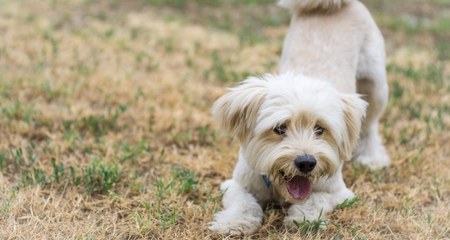
As with people, you can say a lot about your dog’s mood by the way he moves. If he approaches you in a straight line, for example, he is a little aggressive. If he takes a zigzag path, it’s because he’s friendly. Try to analyze your dog’s movements and react accordingly. Also, look at where he is standing or where he is moving. He’s heading for the back door of the house? He may want to go for a walk. If he walks around his food bowl, it probably indicates that he is hungry.
2. Pay attention to your dog’s barking
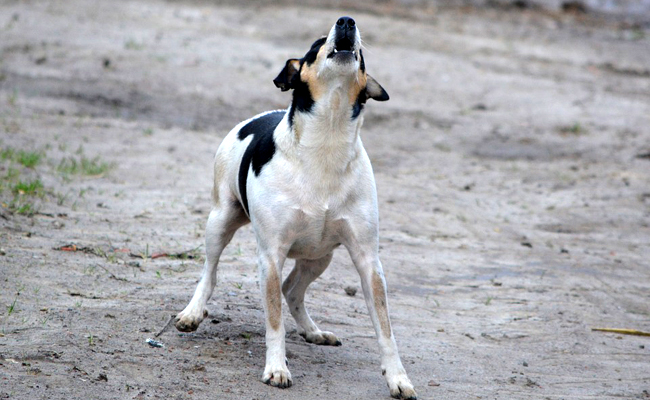
A dog’s barking is his voice, and he will use it to convey many different messages. Does your dog bark at extended intervals? It could mean that he is alone and looking for company. Is his barking a little frenetic? He might think there’s a problem and he alerts the pack. Dogs also bark to indicate physical pain. For example, a series of yelps may indicate that he is suffering. Assess the situation and call your veterinarian if necessary.
3. Understanding destructive behaviors

Most dog owners have already had the misfortune to come home to find that their dog has shattered some of their personal belongings. Maybe it was your favorite pair of shoes that suffered the most damage, or maybe it was your favorite comfortable sofa. Our natural reaction is anger when a dog shows destructive behavior. But instead, try to understand why he chose to do so. When your dog destroys your property, he will probably tell you two things. First, he needs more toys to play with. Second, he needs more stimulation and attention from you.
4. Look him in the eye

Just like people, a dog’s eyes express a lot of emotions. If your dog is unable to support your gaze, he may be angry. You will probably experience this if he looks at his favorite place or chews on one of his toys. The shape of your dog’s eyes can also send important messages. If they are of normal size and shape, your dog is relaxed. If he feels tense, his eyes may seem larger than normal.
5. Tongue sounds
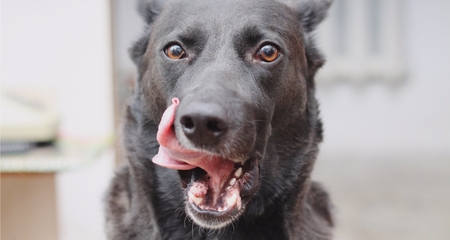
Tongue sounds are often motivated by anxiety and the desire to appease the owner or avoid conflict, but they do not mean that your dog knows he has been “bad” and that he is sorry. Dogs can certainly read our body language and can be worried or anxious if we seem upset, but it’s not the same as feeling guilty or understanding that they have done something wrong.
6. Sneezing and yawning
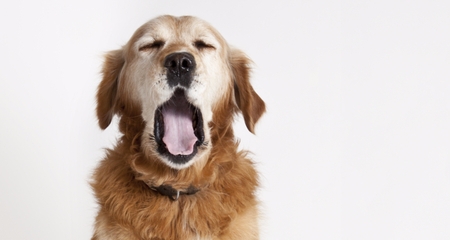
Dogs sometimes try to communicate with us by sneezing and yawning unnecessarily. A sneeze or yawn means that your dog is uncomfortable and stressed, often in the presence of new animals or people. Believe it or not, humans do it when they feel uncomfortable too! This can be confusing because dogs also yawn when they feel satisfied around you. The key is to look for yawning in unfamiliar circumstances.
7. Tail posture
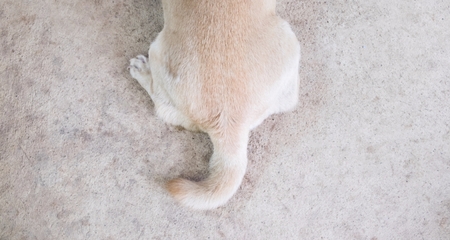
Perhaps the most common form of canine communication is the tail movement. The dog’s tail can communicate a whole range of emotions other than joy. For example, a slow shake means your dog is cautious, and a stiff tail held high means your dog is alert. A low tail means your puppy feels satisfied, but a folded tail means he is afraid. If your dog wags his tail vigorously enough to twist his butt (we all know what I’m talking about), it means he’s happy to see you!
8. Observe the ears

Like the tail, the position of your dog’s ears can indicate mood swings. If his ears are raised, he feels particularly alert. The flattened ears up to the head are a clear signal that your dog feels scared.
9. The raised leg
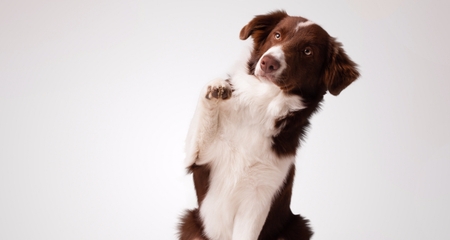
Dogs attract attention by lifting their paws and touching you. You probably see it most often when you are sitting and your dog approaches you to put a leg on your knee. In puppies, this is communicated by tapping the air several times.
10. Recognize the needs of your dogs

Your dog has emotional and physical needs. For example, your dog wants you to know that he will protect you. If he is sitting on your foot, this is an example of care. Protection is also the reason he barks at guests. Your dog needs you to notice when he doesn’t behave normally. Eating habits are particularly important indicators that something is wrong. If your dog is not interested in food, look for the cause and call your veterinarian if necessary.


![[Photos] Why WD-40 Is Magic In Your Garden?](https://lifetonik.com/wp-content/uploads/sites/7/2019/08/WD40-Prices-Highres_Page_8_Image_0008-218x150.jpg)





![[Photos] Take A Look Of The Obama’s New Home Before It’s Banned](https://lifetonik.com/wp-content/uploads/sites/7/2019/07/Obama1-218x150.jpg)

![[Slideshow] Celebrity Homes: 21 Of The Most Luxurious](https://lifetonik.com/wp-content/uploads/sites/7/2019/07/Taylor-Swift-218x150.jpg)
![[Slideshow] More Parents Are Now Gluing Pennies to the Bottom of their Kid’s Shoes](https://lifetonik.com/wp-content/uploads/sites/7/2019/07/Keep-Them-Entertained-218x150.jpeg)
![[Photos] 20 Fashion Mistakes That Too Many Women Make!](https://lifetonik.com/wp-content/uploads/sites/7/2019/07/5-style-mistakes-that-make-you-look-frumpy-featured-218x150.jpg)



















![[Gallery] 25 Discounts For Seniors To Which You Are Entitled Without Knowing It](https://lifetonik.com/wp-content/uploads/sites/7/2019/08/EAZxECUXUAAvNZR-218x150.jpg)
![[Slideshow] Here’s the salary of every governor in the United States](https://lifetonik.com/wp-content/uploads/sites/7/2019/08/Charlie-Baker-218x150.jpg)
![[Photos] No One Will Want To Buy This House After Seeing These Pictures](https://lifetonik.com/wp-content/uploads/sites/7/2019/08/terrible-real-estate-photos-2-5c35e727c9f95__700-218x150.jpg)



